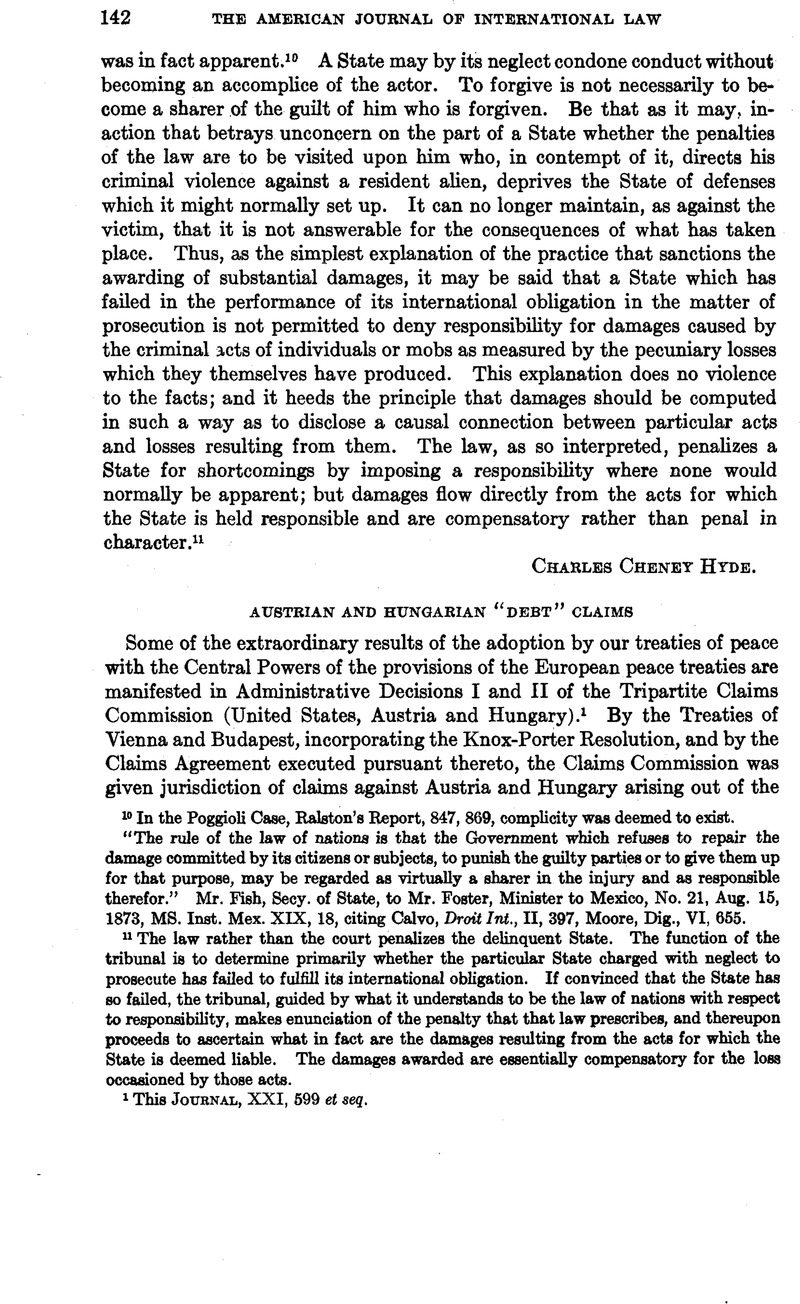No CrossRef data available.
Published online by Cambridge University Press: 04 May 2017

1 This Journal , XXI, 599 et seq.
2 Wolff v. Oxholm (1817), 6 M. & S. 92. See this Jotjbnal, Vol. XVIII, p. 524, note 4.
3 Some of these are stated by Parker,Judge as sole Commissioner, in Administrative Decision, II, supra, p. 17, note 3. See also Baruch, The Making of the Reparation and Economic Sections of the Treaties,New York, 1920, p. 99, et seq.
4 This Journal, Vol. XIX, p. 355.
5 Deutsche Bank v. Humphrey (1926), 272 U. S. 517, 519, in which Justice Holmes says, for the majority: “ An obligation in terms of the currency of a country takes the risk of currency fluctuations and whether creditor or debtor profits by the change the law takes no account of it.” Zimmermann Sutherland,v. 274 U. S. 253.
6 National Bank of Egypt v. German Government and Bank fiir Handel and Industrie, Recueil, V, 26; MargaretBerliner Williams v. Lebens-Versicherungs-Gesellschaft, Recueil, V, 322. The dicta in these cases, where the award for the debt was made against the private debtor, do not necessarily support the award. Cf. Stevenson v. Banque Nationale de Bulgarie, Rec., II, 77.
7 On a previous occasion, we have expressed the opinion that it was a serious legal error of the peace treaties to assume that “ Austria” and “ Hungary” were the legal successors of the Austro-Hungarian Empire. This Journal, Vol. 19, pp. 358-359.